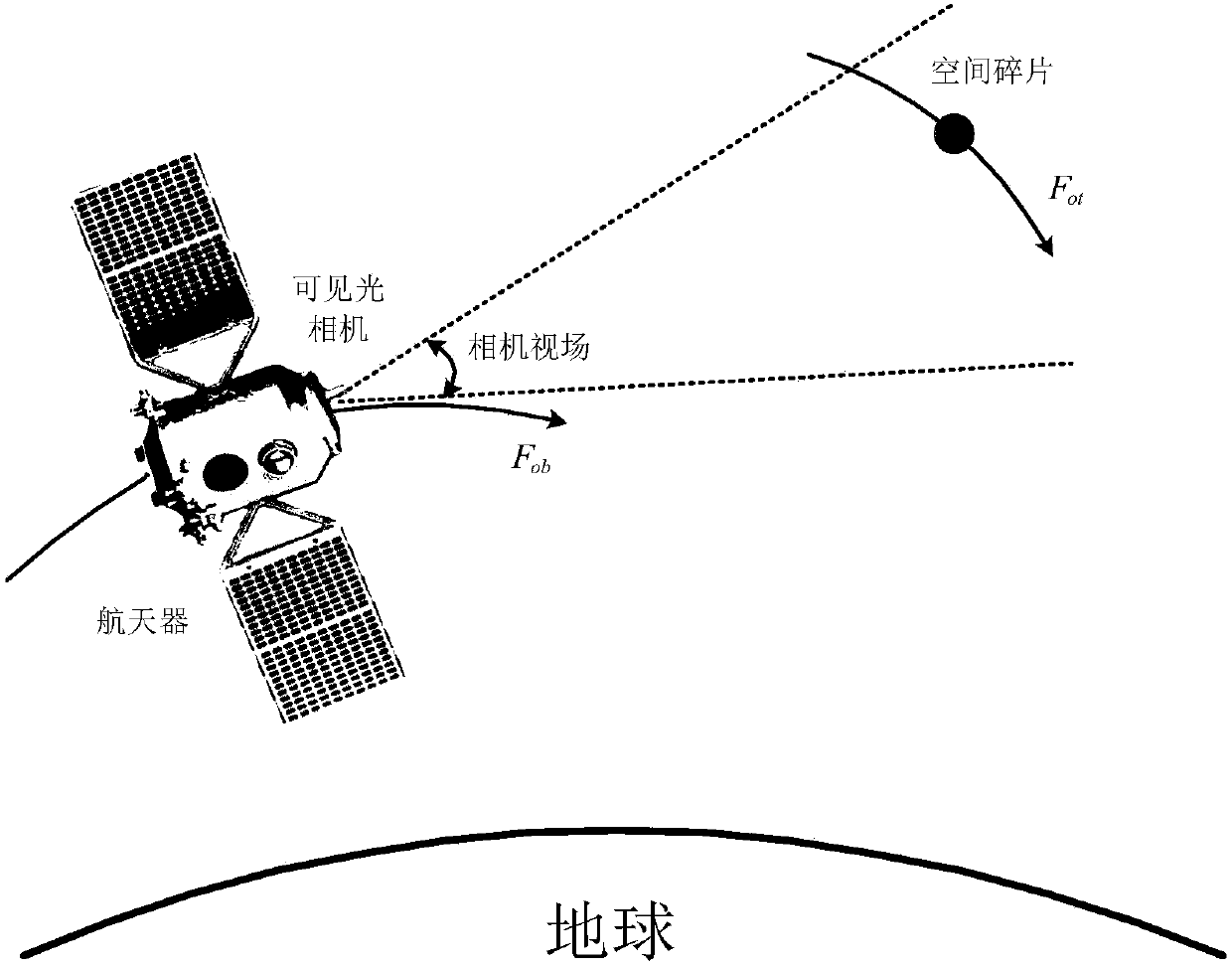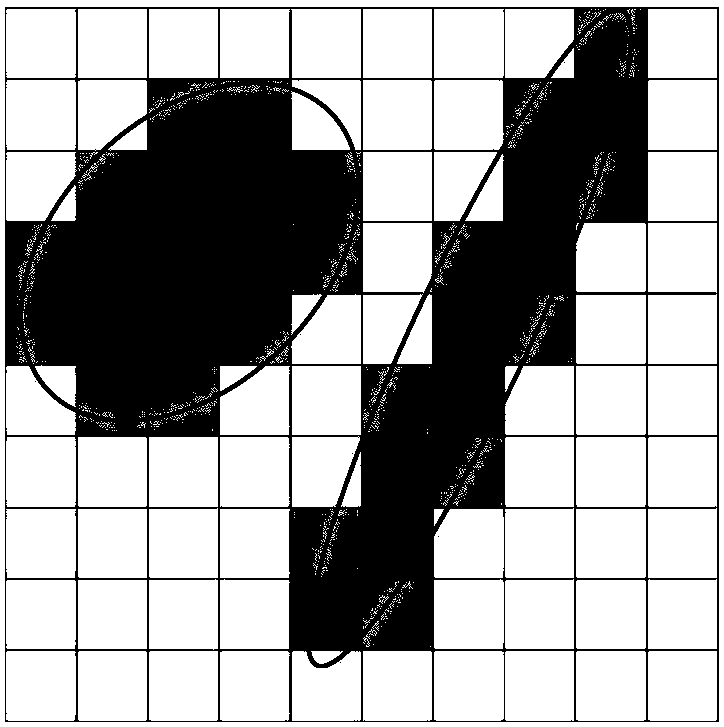A fast detection and positioning method for space debris based on a spaceborne visible light camera
A technology of space debris and positioning methods, which is applied in the directions of measuring devices, surveying and navigation, and photo interpretation, and can solve problems such as limited computing resources
- Summary
- Abstract
- Description
- Claims
- Application Information
AI Technical Summary
Problems solved by technology
Method used
Image
Examples
Embodiment 1
[0097] This embodiment discloses a method for quickly detecting and locating space debris based on a spaceborne visible light camera. To verify the method, firstly, a space debris image is simulated and generated. The basic parameters of the camera are shown in Table 1. according to Figure 6 The pinhole imaging model and the C-W equation are shown, and the motion state of the debris relative to the spacecraft in the camera coordinate system and the debris radius r at the initial moment are set as shown in Table 2. The spacecraft is running in a geosynchronous orbit. The first frame image obtained by the camera is as follows: Figure 8 Shown in the white box is a partial enlarged view.
[0098] Table 1 Basic parameters of camera
[0099]
[0100] Table 2 The initial relative motion state of fragments
[0101]
[0102]
[0103] Step 1: Number the debris trajectories in the pictures taken by the spaceborne visible light camera by means of connected domain detection....
PUM
 Login to View More
Login to View More Abstract
Description
Claims
Application Information
 Login to View More
Login to View More - R&D
- Intellectual Property
- Life Sciences
- Materials
- Tech Scout
- Unparalleled Data Quality
- Higher Quality Content
- 60% Fewer Hallucinations
Browse by: Latest US Patents, China's latest patents, Technical Efficacy Thesaurus, Application Domain, Technology Topic, Popular Technical Reports.
© 2025 PatSnap. All rights reserved.Legal|Privacy policy|Modern Slavery Act Transparency Statement|Sitemap|About US| Contact US: help@patsnap.com



